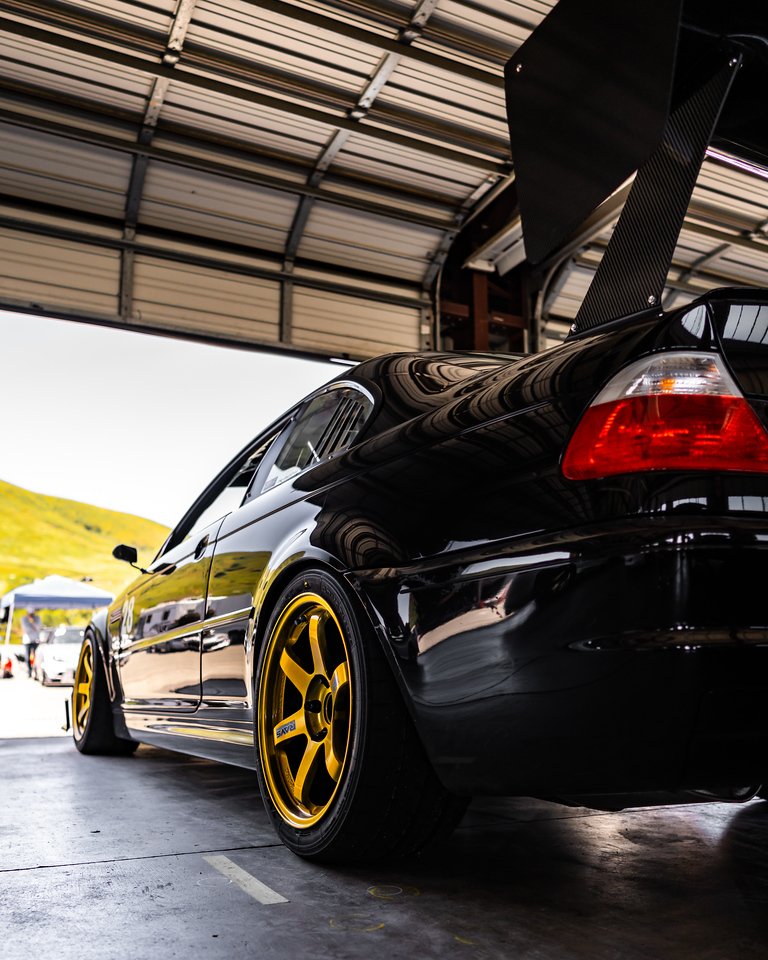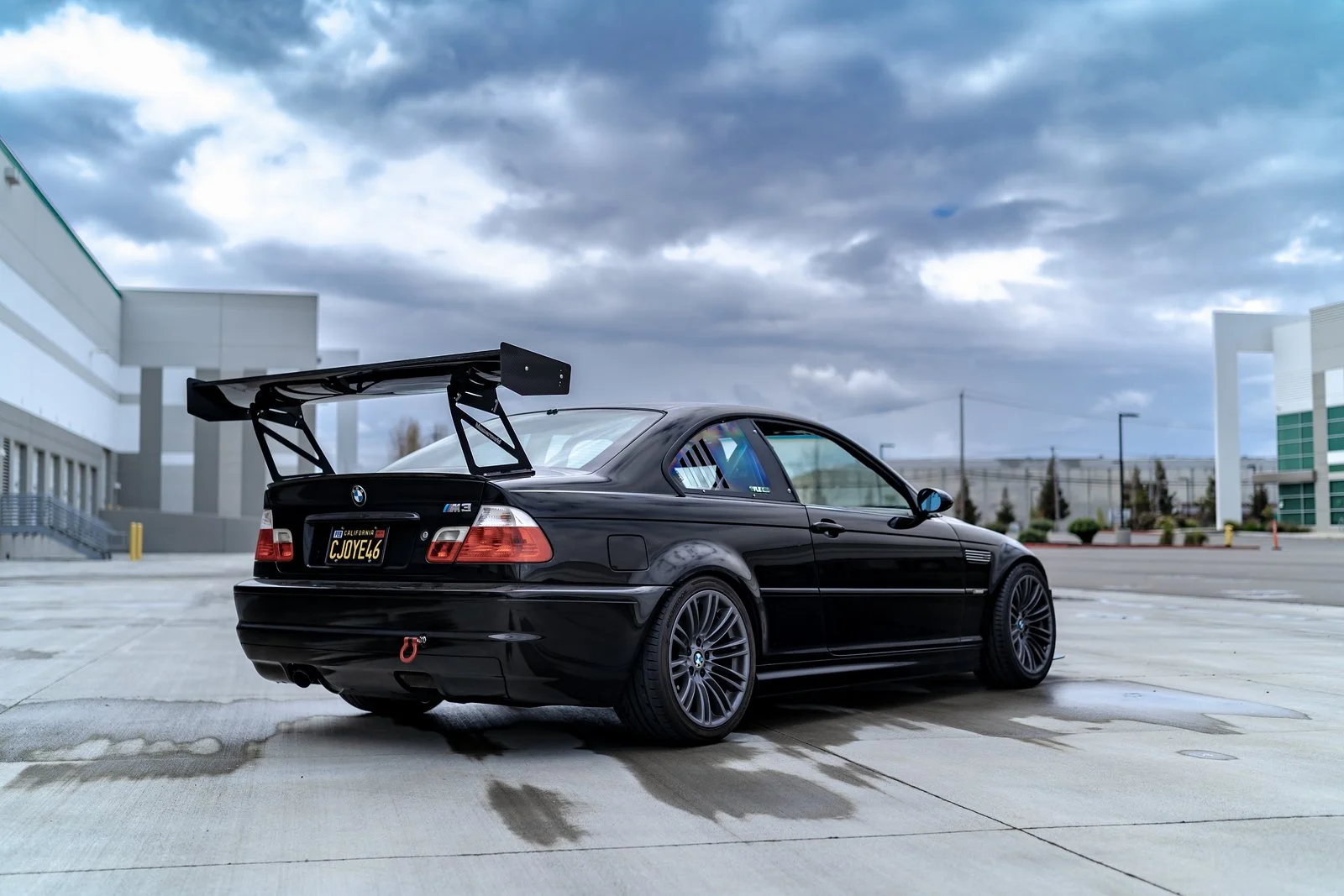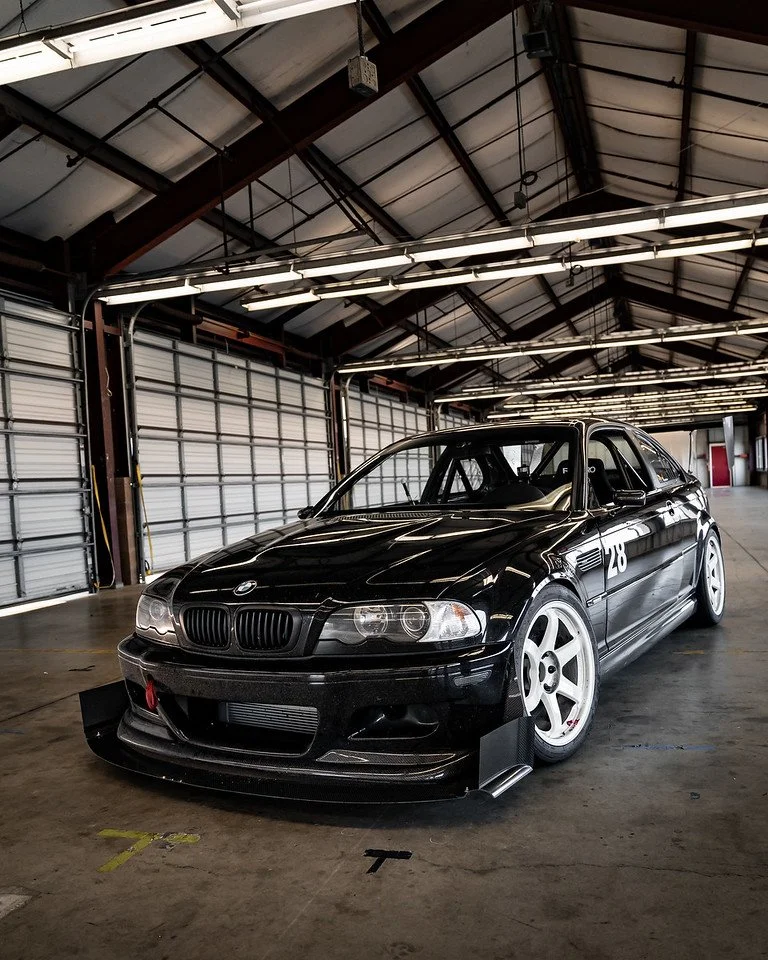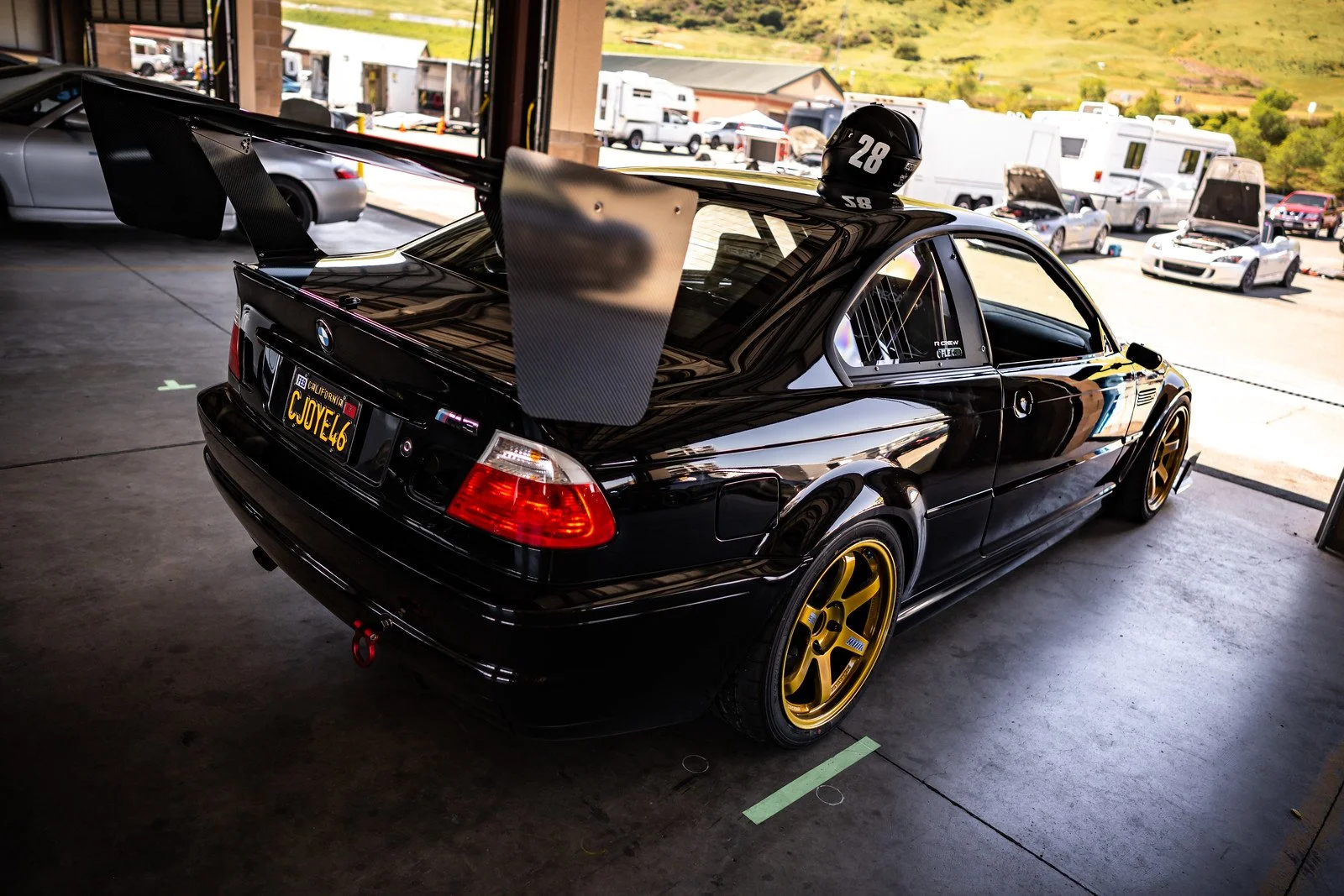Christian's M3: A Motorcycle's Rightful Successor
Some people get the an introduction to motorsport through karts, bikes, quads, or other simple, unforgiving vehicles and the benefits are obvious. Christian Fernandez spent four or five years tracking bikes before he even considered taking a four-wheel vehicle to the circuit. With the techniques learned from bikes, his skillset was remarkably broad when he started getting into cars. His command of the car’s cornering potential via trail-braking helped set the stage for real speed—and he needed a car that would suit that. More importantly, he knew that simplicity, weight, and directness were some of the most important qualities in a track vehicle, and so he sought one that would reward him as an exacting driver.
After he proved himself on two wheels, Christian’s friends badgered him into trying a track day in a car. Christian didn’t have a track-ready car available at that time, but his C63—full fat 6.2-liter and everything—was good enough for popping his four-wheel cherry.
That didn’t keep a pack of Type Rs from passing him around the outside at Thunderhill’s Turn 2. That image of the lightweight Honda and its ability to change direction, even in a long-steady state corner that isn’t always friendly to front-wheel drives, motivated him to build a car in a certain way: light and simple.
Being a pragmatic person, Christian decided to take one of two proven paths: pick either an S2000 or an E46 M3. Through years of development, the two have had most of their issues ironed out and their aftermarkets have grown broad.
When a stock E46 caught his eye—high mileage, but clean and an original manual—he stopped for anything else. The fact that this was a few years ago and prices were sweet might’ve compelled him to pick up this bargain-rate Bimmer.
The control weights, responsive motor, and playful chassis were so strimulating from the start he didn’t feel the need to start modifying—something he’d always been interested in. However, the staggered setup resulted in a little too much push for his liking, and even though he could overcome some of that inherent understeer with his trail-braking ability, he decided to make some setup changes to suit him and his driving style.
“The basics made a big jump in performance,” he said. Just coilovers, brakes, and a square set of tires made the car a startlingly alert. That makes the already stellar control weights and responses all the more stimulating.
Weight reduction improves cornering, acceleration, braking, and extends the life of the consumables. It’s not surprising that he’s gone to serious lengths in trimming the fat —and he’s still looking for more to shed.
To continue building upon this The removal of the interior, the sunroof, A/C condenser (a failure point), and some unnecessary thinly-pressed sheetmetal, he got well underneath the 2,800-pound point. A set of handleless fiberglass doors dropped another ninety, and little parts like acrylic rear windows trimmed a little more.
Good ducting has made it possible to run without a radiator fan.
Weight means so much. Yes, he’s paid the price in versatility—he misses when he could street drive it now—but there’s just this electric personality—it might understeer a tad if he throws it in too fast, but it’s otherwise the epitome of neutral. With his ability to get the car rotated and the stable rear, he can lean on the car come corner exit, and that, combined with a broad powerband and a high redline means his 350-odd horsepower are more than enough to run with more powerful machinery.
There’s a little second-gear wheelspin, but aside from stabbing the throttle in hairpins, there’s not much that will upset the car.
This is no stroke of luck. By assessing various rebound and compression settings, done with a notebook and driving impressions, Christian’s made it a very neutral car. Of course, he had to try new settings when he started playing with the aerodynamics.
Rock solid, predictable, and mostly friendly. That holy trinity made greater in all respects by the addition of some pretty unusually sophisticated aero pieces. The difference between his early, off-the-shelf splitter and wing and the current RS Future version is easily felt in Sonoma’s Turn 10. “Maybe I could’ve gone faster with the first setup, but I felt comfortable going into 10 without braking. Now I just have to lift a little. The feedback gives me confidence in the car.” Gaining ground is easiest in the fastest corners now—see 1:22 in the footage below for a better idea.
Same with Turn 1. “I can go in much deeper before I have to back off the throttle,” he adds. The braking force, predictably incredible, is stronger with the newer wings. Having a light car helps, but it’s the combination of those two and AP Racing 5000R brakes at both axles with Carbotech XP10 pads that amount to a near-perfect stopping machine. The car stops convincingly and consistently, and after a session is finished, there’s only very minor fade if any. What’s more, the combo of pad and master cylinder facilitate trail-braking due to the way they can be modulated.
As it sits, there’s not much more he can really think of changing. “It’s just about perfect at this point,” he laughs. You can tell that he’s had nothing surprise him or disappoint him over the course of developing this trustworthy, tried-and-true M3. When building track cars, that is a rare thing indeed, but he did do his homework, took a practical approach, and benefited from a little luck along the way.
There is talk of adding a fiberglass trunk and maybe supercharging the motor with a first-gen ESS blower that could bump output to a healthy 400 horsepower at the wheels. That extra grunt would add weight with the necessary coolers, but the net benefit would be obvious. Whether that’s a wise decision to make with the motor nearing 180,000 miles is another discussion.
“The more I drive this car, the more I wonder ‘What else is better than this?” he asks himself. Well, with this car’s lap times and its supreme reliabilty, there aren’t many. He’s still considering an S2000, but he’s gonna wait until he has more garage space. Again, a very practical decision—and why not? Practicality has clearly paid off.
For more, visit Christian’s instagram here.
Power
o Evolve intake air box
o Active Autowerke’s headers
o Bimmerworld single exit exhaust
o Dynomax muffler to pass Laguna sound
o APE Flex Fuel Kit
o Bosch 550cc fuel injectors
o Walbro 450lph fuel pump
o Turnermotorsports lightweight pulleys
o Tuned by HTE Performance
Other
o JRZ RS Two coilovers
o Swiftech springs
o Ground control front sway bar
o RSFuture wing and front splitter
o AP Racing Pro 5000R big brake kit
o Carbotech XP10 brake pads
o CAE shifter
o 18x10 TE37 wheels, 265 AR1 tires







